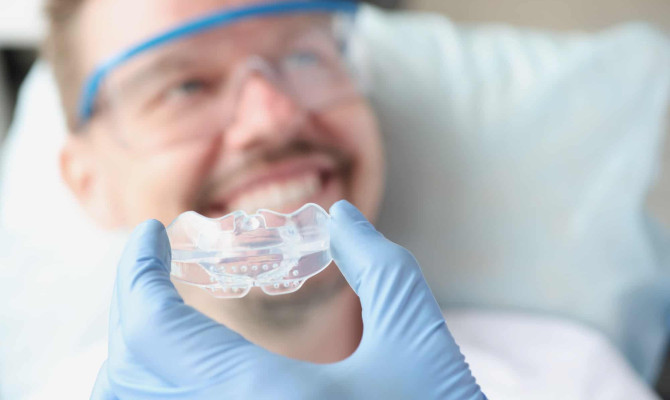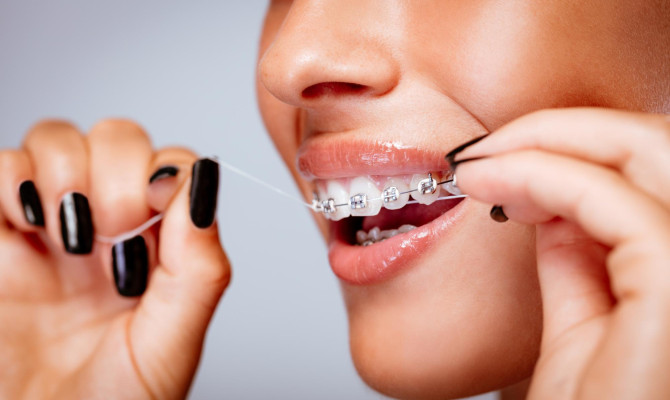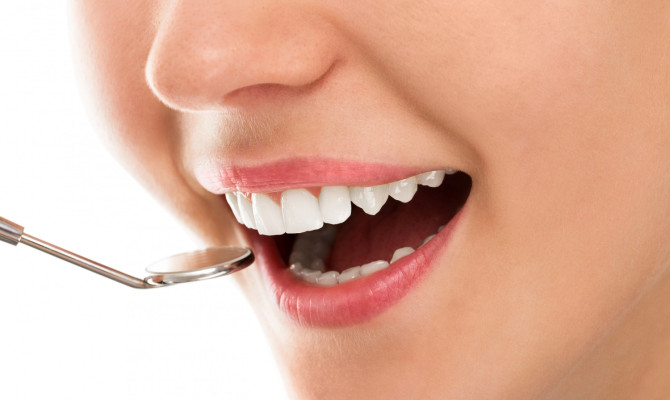Hyperdontia : Causes, Symptoms, and Treatment

- Hyperdontia
- 16 Aug 2023
Overview
About hyperdontia
Hyperdontia is a condition with more teeth than the typical 20 milk teeth and 32 adult teeth. The extra teeth are referred to as supernumerary and often develop behind or near the regular primary or permanent teeth. It is more commonly seen on the upper jaw. The permanent dentition has five times the number of supernumerary teeth as the deciduous dentition. The numerous forms of hyperdontia (supernumerary) teeth, their symptoms, causes, challenges, and methods of diagnosis and treatment are discussed in this article.

Symptoms
Symptoms of hyperdontia
- The primary sign of Hyperdontia is the occurrence of an additional tooth or teeth.
- Although they are typically not painful, the extra teeth may strain the jaw and gums, causing swelling and pain.
- Teeth might appear crooked due to the presence of extra teeth.
These extra teeth may be
- Either a single tooth or multiple teeth. 1Symptoms| Researched based study from Nlm.nih.gov
- Seen in the upper, lower, or both jaws.
- Appears on one or both sides of the mouth.
Types
Types of hyperdontia
They can be of many kinds, as follows:
Based on their location
- Mesiodens – the most common type of supernumerary teeth, where the two flat, central teeth in the upper jaw have a third tooth growing between them. 2Types| Researched based study from Nlm.nih.gov
- Para molar – a tooth developing next to a molar not in alignment with the other teeth and may be positioned closer to the cheek or the tongue.3Types| Researched based study from Nlm.nih.gov
- Distomolar – a new tooth is emerging right behind the massive molar teeth at the back of the mouth.4Types| Researched based study from Nlm.nih.gov
Based on their shape
- Supplemental – it could have a standard tooth-like form.1Types| Researched based study from Nlm.nih.gov
- Tuberculate – teeth with a tube- or barrel-like form.
- Conical or peg-shaped – teeth that appear sharp as they are broader near the gum line and narrower at the tips.
- Compound odontoma comprises several tiny, closely spaced teeth-like growths.
- Complex odontoma is a region of tooth-like tissue that develops irregularly.
Causes
Causes
Although the exact cause of hyperdontia is unknown, it is thought to have various causes. They are primarily associated with syndromes, and a few of them may include:
- Cleidocranial dysplasia is an uncommon genetic condition resulting in unusual bone growth around the collarbone and skull.5Causes| Researched based study from Hopkinsmedicine.org
- Cleft lip or/and cleft palate – happens when a baby’s lips or/and roof of the mouth do not develop properly in the womb.6Causes| Researched based study from Nlm.nih.gov
- Trichorhinophalangeal syndrome may have hair, skin, teeth, bones, and joint abnormalities. 7Causes| Researched based study from Medlineplus.gov
- Gardner syndrome – Besides the increasing danger of colon cancer, this uncommon condition also causes harmless growth in many places.8Causes| Researched based study from Nlm.nih.gov
- Fabry disease – Alpha-galactosidase A deficiency is the main cause of this condition, which can impair the skin, teeth, brain, and neurological system.9Causes| Researched based study from Nlm.nih.gov
- Ellis van Creveld syndrome – this unusual condition results in extra fingers and toes and produces short limb dwarfism and congenital heart defects.9Causes| Researched based study from Nlm.nih.gov
- Rubinstein-Tayebi syndrome – results in unusual facial features, low stature, intellectual incapacity, issues with the teeth, eyes, heart, and kidneys, as well as other health issues. 9Causes| Researched based study from Nlm.nih.gov
- Nance-Horan syndrome results in congenital cataracts that impair eyesight and create oral problems.9Causes| Researched based study from Nlm.nih.gov
Risk factors
Risk factors
- Hereditary factor – supernumerary teeth can run in families even without syndromes.10Risk factors| Researched based study from Nlm.nih.gov
- Genetic disorders – mainly in cases of genetic syndromes.
- Gender – males experience hyperdontia more than females do.11Risk factors| Researched based study from Nlm.nih.gov
Diagnosis
Diagnosis
- A dentist can quickly diagnose hyperdontia by checking the patient’s mouth to see if those extra tooth or teeth has already grown in.
- A dentist may suspect the presence of extra teeth when a permanent tooth fails to grow out or emerges in the wrong place, when a milk tooth stays and doesn’t fall out, or when there are apparent gaps between teeth.
Dentist might suggest the imaging exams listed below
- Dental x-rays or OPG (Orthopantomograph) – to detect any impacted hyperdontia tooth or teeth.1Diagnosis| Researched based study from Nlm.nih.gov
- CT scan – to obtain a more comprehensive view of the patient’s teeth, jaw, and mouth.
Treatment
Treatment of hyperdontia
- Treatment is determined by whether the extra teeth have the potential to cause issues.
- Hyperdontia teeth may not need treatment if they do not create symptoms or difficulties.
- However, even if they are not hurting, the extra teeth in most cases of hyperdontia need to be removed.
- Supernumerary (hyperdontia) teeth can be removed or treated with a root canal left in the arch and monitored frequently.12Treatment| Researched based study from Nlm.nih.gov
A dentist might advise getting rid of additional teeth if :
- Eating or chewing difficulties.
- When chewing, the extra tooth irritates the cheek or tongue.
- Crowded or misaligned teeth.
- Inability to properly clean the teeth leading to gum infections.
- Delayed eruption of permanent or adult teeth.
- Possible harm to immature permanent teeth.
- Possess a genetic disorder as the cause of the extra teeth.
- It may cause dental cavities on the adjacent tooth.
- Cause pain or discomfort due to overcrowding.
- Feeling nervous or self-conscious about the appearance of one’s extra teeth.
Prevention
Prevention of hyperdontia
Since it is primarily genetic, it cannot be prevented
- However, if hyperdontia is caught early and sometimes removed, issues from the extra teeth can be avoided.
- Undoubtedly, identifying problems early allows us to manage the patient correctly. It also helps us make wise decisions about the patient’s long-term care and therapies.
- Supernumerary (hyperdontia) teeth may play a vital role in a specific genetic disorder and serve as a crucial early diagnostic indicator.
Complications
Complications related to hyperdontia
The following are the consequences of supernumerary teeth :
- When found in an incorrect location, it can hinder the natural eruption of newly formed teeth.
- Teeth that are crowded together in one area and appear crooked. 12Complications| Researched based study from Nlm.nih.gov
- Sometimes, the extra tooth or teeth may press the surrounding structures, causing pain. Example – cheek or tongue.
- Abnormal gaps between the teeth if extra teeth are impacted.
- Gum infections are called gingivitis as they cannot be adequately cleaned by brushing or flossing.
- Delayed permanent tooth emergence.
- Root of the permanent tooth may develop abnormally. Example – curved. 13Complications| Researched based study from Cda-adc.ca
- Impacted permanent tooth due to limited space in the jaw.
- Adjacent tooth may be rotated or displaced.
- Root resorption may occur.
- Cysts may be formed around the tooth.
- Failure or delayed milk tooth eruption.
- Eruption of the tooth into the sinuses or nasal cavity.
- Overcrowding and misaligned teeth may cause an inability to chew food properly.
Prognosis
Prognosis of hyperdontia
The prognosis for hyperdontia is usually favorable since they are removed or treated if they harm developing teeth, a person’s appearance, or the chewing function. A better prognosis for those with hyperdontia is reportedly brought on by an early diagnosis. The pain, if any, naturally disappears after removing the extra tooth. Some people may need further orthodontic correction if the neighboring teeth are misplaced or affected by the extra tooth. Consult a dentist if you have any worries about your dental health.
Any feedback on this article?
 This Articles content was accurate
This Articles content was accurate Very Informative Article
Very Informative Article I have a question or a comment
I have a question or a comment
 This article contains inaccurate content
This article contains inaccurate content This article was not helpful
This article was not helpful I have a question or a comment
I have a question or a comment
We appreciate your helpful feedback!
Checkout our social pages
References
-
National Library of Medicine
Management of supernumerary teeth | Symptoms
-
National Library of Medicine
Diagnosis and Management of Supernumerary (Mesiodens): A Review of the Literature | Types
-
National Library of Medicine
Paramolar – A supernumerary molar: A case report and an overview | Types
-
National Library of Medicine
A Rare Case Series: Impacted Distomolars | Types
-
Johns Hopkins Medicine
Cleidocranial Dysplasia (CCD) | Causes
-
National Library of Medicine
Supernumerary teeth in patients with cleft lip and palate: the tooth germs do not separate | Causes
-
Medline Plus
Trichorhinophalangeal syndrome type I | Causes
-
National Library of Medicine
Gardner Syndrome | Causes
-
National Library of Medicine
Genetic background of supernumerary teeth | Causes
-
National Library of Medicine
Genetics and presence of non-syndromic supernumerary teeth: A mystery case report and review of literature | Risk factors
-
National Library of Medicine
Prevalence, Characteristics, and Morphology of Supernumerary Teeth among Patients Visiting a Dental Institution in Rajasthan | Risk factors
-
National Library of Medicine
Prevalence, etiology, diagnosis, treatment and complications of supernumerary teeth | Complications
-
Journal of the Canadian Dental Association
Supernumerary Teeth — An Overview of Classification, Diagnosis and Management | Complications


































